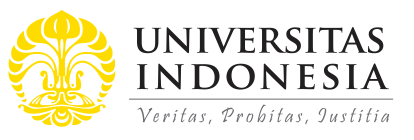
Abstract
A previous study demonstrated that low-incomewomen tend to have lower financial literacy. This low level of financialliteracy affects the manner in which they manage their daily finances, as wellas their ability to save for long-term needs. Currently, the statistics show that financialliteracy in Indonesia is relatively low. Tosupport Indonesian government in improving financial literacy, especially among the mostmarginalized group – women of low income – Universitas Indonesia launched acommunity engagement initiative conducted in the form of financial literacytraining targeted at low-income women working as streetsweepers around the university. This study investigates the motivation toward andperceived usefulness of the financial education program to improve the financial literacy of low-income women working as street sweepers aroundUniversitas Indonesia. A mixed research method is applied in the study. The data were collected from in-depthinterviews and a mini survey conducted to 23 low-income female street sweepers who joined the 10weeks financial education program. Both quantitative and qualitative data wereanalyzed to produce a comprehensive descriptionof the participants’ perceptions and attitudes toward the financial literacyprogram. The study demonstrates that the majority of low-income women have lowmotivation toward financial literacy education, and they also have a negative perceptionof the usefulness of such program. Thus, it is very important that alleducators and trainers examine the characteristics of the trainees and assessthe relevancy of the education program before they design certain communityengagement program.
References
Atkinson, A., & Messy, F. (2013). OECD Publishing (Vol. 34). Retrieved from http://doi.org/10.1787/5k3xz6m88smp-en
Bernheim, B. D., & Garrett, D. M. (2003). The effects of financial education in the workplace evidence from a survey of households.pdf. Journal of Public Economics, 87, 1487–1519. Retrieved from https://dukespace.lib.duke.edu/dspace/bitstream/handle/10161/2031/Bayer_the_effects_of_financial_education.pdf%3Bjsessionid=77149A461D7A10EE568EE6C9AC575723?sequence%253D1
Birochi, R., & Pozzebon, M. (2016). Improving financial inclusion: Towards a critical financial education framework. RAE Revista de Administracao de Empresas, 56(3), 266–287. https://doi.org/10.1590/S0034-759020160302
Bruning, S. D., Mcgrew, S., & Cooper, M. (2006). Town – gown relationships : Exploring university – community engagement from the perspective of community members. Public Relations Review, 32, 125–130. https://doi.org/10.1016/j.pubrev.2006.02.005
Buckland, J. (2010). Are Low-Income Canadians Financially Literate? Placing Financial Literacy in the Context of Personal and Structural Constraints. Adult Education Quarterly, 60(4), 357–376. https://doi.org/10.1177/0741713609358449
Buckland, J. (2011). Money management on a shoestring: A critical literature review of financial literacy & low-income people. Task Force on Financial Literacy.
Cacioppo, J. T., & Petty, R. E. (1984). The elaboration likelihood model of persuasion. Advances in Consumer Research, 11(1), 673–675. http://doi.org/10.1558/ijsll.v14i2.309
Centers for Disease Control and Prevention. (2011). Principles of community engagement. Atlanta (GA): CDC/ATSDR Committee on Community Engagement. Retrieved from https://www.atsdr.cdc.gov/communityengagement/pdf/PCE_Report_508_FINAL.pdf
Definit.Asia. (2013). Developing Indonesian Financial Literacy Index. Retrieved from http://www.definit.asia/research-project6.html
Driscoll, A. (2008). Carnegie’s Community-Engagement Classification: Intentions and Insights. Change: The Magazine of Higher Learning, 40(1), 38–41. https://doi.org/10.3200/CHNG.40.1.38-41
Fernandes, D., Lynch, J. G., & Netemeyer, R. G. (2014). Financial Literacy, Financial Education, and Downstream Financial Behaviors. Management Science, 60(8), 1861–1883. https://doi.org/10.1287/mnsc.2013.1849
Finclusion.org. (2015). Indonesia Quicksight Report Fit Tracker Survey Conducted August-November 2015.
Frymier, A. B., & Shulman, G. M. (1995). “What’s in it for me?”: Increasing content relevance to enhance students’ motivation. Communication Education, 44(1), 40–50. http://doi.org/10.1080/03634529509378996
Hashagen, S. (2002). Models of community engagement. Retrieved from https://pdfs.semanticscholar.org/cfb9/ba053e769248c6fbe4e0b65a7007d9969eec.pdf
Hastings, J. S., Madrian, B. C., & Skimmyhorn, W. L. (2013). Financial Literacy, Financial Education, and Economic Outcomes. Annual Review of Economics, 5(1), 347–373. https://doi.org/10.1146/annurev-economics-082312-125807
Hilgert, M. A., Hogarth, J. M., & Beverly, S. G. (2003). Household Financial Management: The Connection between Knowledge and Behavior. Federal Reserve Bulletin, 89. Retrieved from http://heinonline.org/HOL/Page?handle=hein.journals/fedred89&id=791&div=&collection=
Hung, A. A., Parker, A. M., Yoong, J. K., & Yoong, J. (2009). Defining and Measuring Financial Literacy. Retrieved from http://www.acove.com/content/dam/rand/pubs/working_papers/2009/RAND_WR708.pdf
Huston, S. J. (2010). Measuring Financial Literacy. The Journal of Consumer Affairs, 44(2), 296–316. Retrieved from http://urbanupbound.org/wp-content/uploads/2014/08/Measuring-Financial-Literacy.pdf
Johnson, R. B., Onwuegbuzie, A. J., & Turner, L. A. (2007). Toward a definition of mixed methods research. Journal of Mixed Methods Research, 1(2), 112–133. http://doi.org/10.1177/1558689806298224
Keller, J. (1983). Motivational design of instruction. Instructional -Design Theories and Models.
Liaw, S. S., & Huang, H. M. (2013). Perceived satisfaction, perceived usefulness and interactive learning environments as predictors to self-regulation in e-learning environments. Computers and Education, 60(1), 14–24. http://doi.org/10.1016/j.compedu.2012.07.015
Lusardi, A., & Mitchell, O. S. (2007). Financial Literacy and Retirement Preparedness: Evidence and Implications for Financial Education Programs. Business Economics, 42(1), 35. http://doi.org/10.2139/ssrn.957796
Lusardi, A., & Mitchell, O. S. (2008). Planning and financial literacy: How do women fare? In American Economic Review (Vol. 98, pp. 413–417). https://doi.org/10.1257/aer.98.2.413
Lyons, A. C., Palmer, L., Jayaratne, K. S. U., & Scherpf, E. (2006). Are we making the grade? A national overview of financial education and program evaluation. Journal of Consumer Affairs. https://doi.org/10.1111/j.1745-6606.2006.00056.x
Mandell, L., & Klein, L. S. (2009). The Impact of Financial Literacy Education on Subsequent Financial Behavior. Journal of Financial Counseling and Planning, 20(206), 15–24. Retrieved from http://www.eric.ed.gov/ERICWebPortal/contentdelivery/servlet/ERICServlet?accno=EJ859556
Meier, S., & Sprenger, C. D. (2013). Discounting financial literacy: Time preferences and participation in financial education programs. Journal of Economic Behavior and Organization, 95, 159–174. https://doi.org/10.1016/j.jebo.2012.02.024
Mitchell, O., Lusardi, A., & Curto, V. (2009). Financial Literacy Among the Young: Evidence and Implications for Consumer Policy. Pension Research Council WP, 1–35. https://doi.org/10.2139/ssrn.1476982
Noe, R. A. (1986). Trainees’ Attributes and Attitudes: Neglected Influences on Training Effectiveness. Academy of Management Review, 11(4), 736–749. https://doi.org/10.5465/AMR.1986.4283922
Petty, R. E., & Cacioppo, J. T. (1986). The Elaboration Likelihood Model of Persuasion. Advances in Experimental Social Psychology, 19(C), 123–205. https://doi.org/10.1016/S0065-2601(08)60214-2
Rossman, G. B., & Wilson, B. L. (1985). Numbers and Words: Combining Quantitative and Qualitative Methods in a Single Large-Scale Evaluation Study. Evaluation Review, 9(5), 627–643. http://doi.org/10.1177/0193841X8500900505
Sanbonmatsu, D. M., Shavitt, S., & Sherman, S. J. (1991). The role of personal relevance in the formation of distinctiveness-based illusory correlations. Personality and Social Psychology Bulletin, 17(2), 124–132. http://doi.org/10.1177/014616729101700202
Schunk, D. H., & Zimmerman, B. J. (2012). Self-Regulation and Learning. In Handbook of Psychology, Second Edition (pp. 45–68). http://doi.org/10.1002/9781118133880.hop207003
Starček, S., & Trunk, A. (2013). The meaning and concept of financial education in the society of economic changes. In Active Citizenship by Knowledge Management & Innovation. Zadar, Croatia. Retrieved from http://www.toknowpress.net/ISBN/978-961-6914-02-4/papers/ML13-475.pdf
Taft, M. K., Hosein, Z. Z., & Mehrizi, S. M. T. (2013). The Relation between Financial Literacy, Financial Wellbeing and Financial Concerns. International Journal of Business and Management, 8(11). https://doi.org/10.5539/ijbm.v8n11p63
Willis, L. E. (2008). Against financial literacy education. Iowa Law Review, 197(94), 197–286. http://doi.org/10.1257/aer.101.3.429
Recommended Citation
Hati, Sri Rahayu Hijrah and Wibowo, Sigit Sulistyo
(2017).
Exploring the motivation toward and perceived usefulness of a financial education: program offered to low-income women in Indonesia.
ASEAN Journal of Community Engagement, 1(1).
Available at: https://doi.org/10.7454/ajce.v1i1.57








